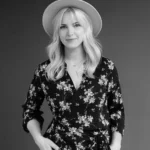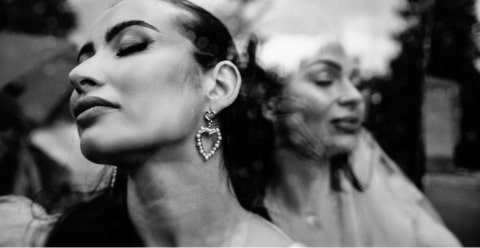In the world of real estate, first impressions are everything. Stunning, high-quality property photos aren’t just worth a thousand words — they can be worth thousands of dollars, and make all the difference between a quick sale at a great price and a property that sits on the market for months.
Dionel Lake, a seasoned interior and real estate photographer (among other genres) and the owner of “The MittenTog” — a premier lifestyle and commercial photography studio in Michigan, knows this all too well. With 17 years of experience capturing beautiful spaces, Dionel has honed her craft to perfection, blending professionalism with a warm, inviting touch that reflects her clients’ unique personalities, and unique properties.
In this post, Dionel shares her insights into overcoming the biggest challenges in real estate photography, from tricky lighting to perspective issues. Plus, she’ll reveal how tech tools, including AI editing software like Imagen, are changing the game for real estate photographers. Let’s dive in!
Conquering Common Lighting Challenges in Real Estate Photography
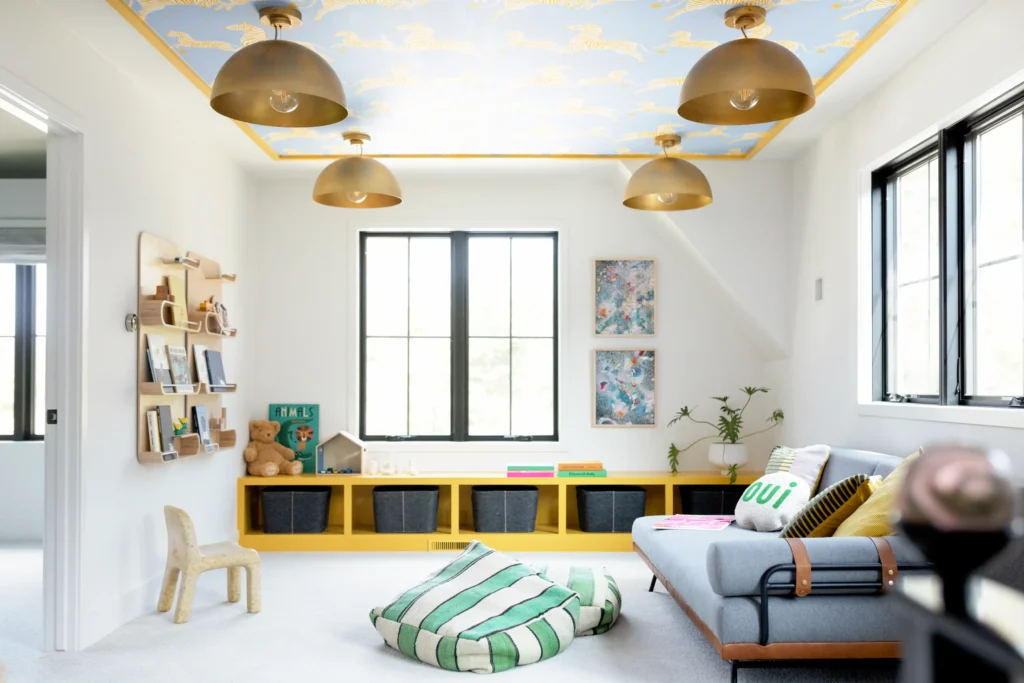
Photographing real estate properties isn’t as simple as pointing and shooting; it’s a delicate dance with light and space.
Lighting challenges, tight corners, and reflections can be significant obstacles when photographing interior spaces. Tight corners, small bathrooms, or entryways may require you to make yourself small.
Dionel Lake knows that lighting can make or break a real estate photo. Working with builders, contractors, and designers, she needs to capture everything from the tiniest details to wide shots of entire spaces.
- Playing Around the Obstacles and Tight Spaces: For those tricky spots — wide lenses are essential! I suggest staying around 24mm to avoid too much warping, most of which can be fixed in post-production. For tricky spots and reflections, the placement of your lighting requires time and strategy based on the type of lighting you want to achieve.
- Overcoming Low-Light Conditions: When dealing with low-light conditions, Dionel emphasizes mastering external lighting. She likens it to cooking, where you “start with the room’s exposure, slow the shutter, widen the aperture, then adjust your ISO and studio lighting accordingly.” She suggests using umbrellas or walls to bounce the light, which floods the room evenly and avoids overexposing key elements.
- Managing Harsh Lighting and Shadows: Dionel loves to let some shadows live, saying, “It gives the space ‘life’ and lets others imagine themselves within the space that was so lovingly designed.” For her, the trick is not to eliminate shadows but to use them creatively, balancing them with softer lighting to bring out the best in the room. Rather than eliminating shadows entirely, she uses them to add depth and realism to her photos.
Ensuring Consistent Lighting Across All Rooms
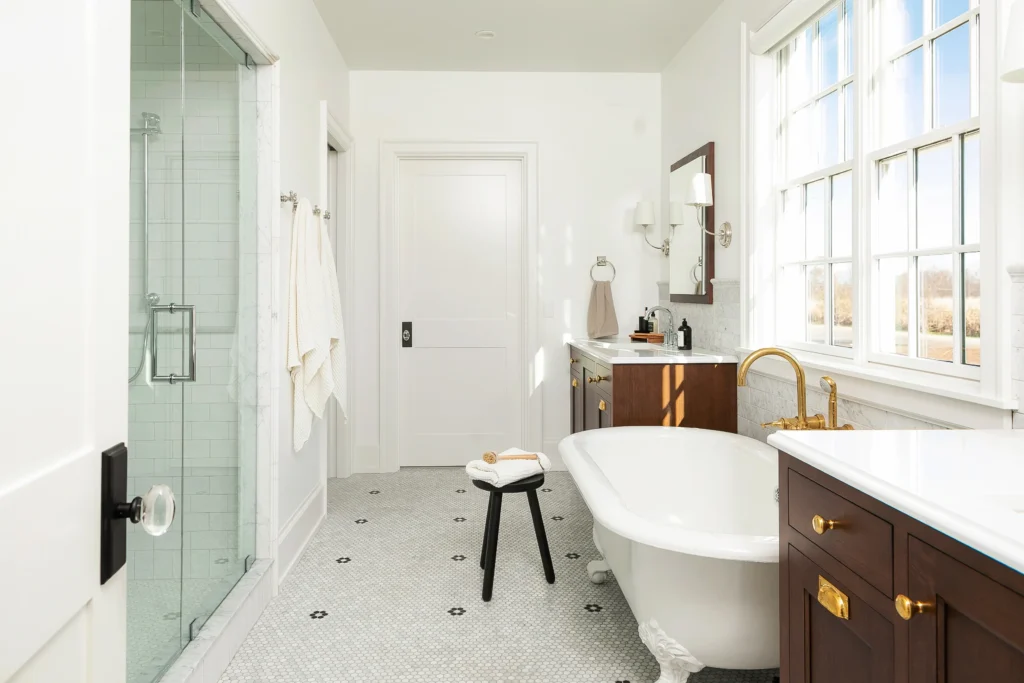
Consistency is key in real estate photography, especially when shooting multiple rooms in a single property.
“I use two primary lighting techniques”, Dionel shares. “First, I bracket, taking 3-4 shots with varying exposures, similar to those who utilize the HDR method of flattening a single image with multiple exposures. Instead of layering the photos, I use this technique when half of the room is overexposed while the other half is in harsh shadow”.
By balancing lighting with studio equipment and supplementing shadows as needed, she achieves a natural look that highlights both the light and selected dark areas without sacrificing detail.
Dionel also uses tilt-shift lenses to correct distortions directly on-site, minimizing the need for post-production fixes. “Using the grid feature in the camera helps maintain straight lines and avoid perspective issues,” she adds, emphasizing the importance of precise composition.
The Power of Perspective: Getting It Right on Site Or Fixing During the Post-Processing
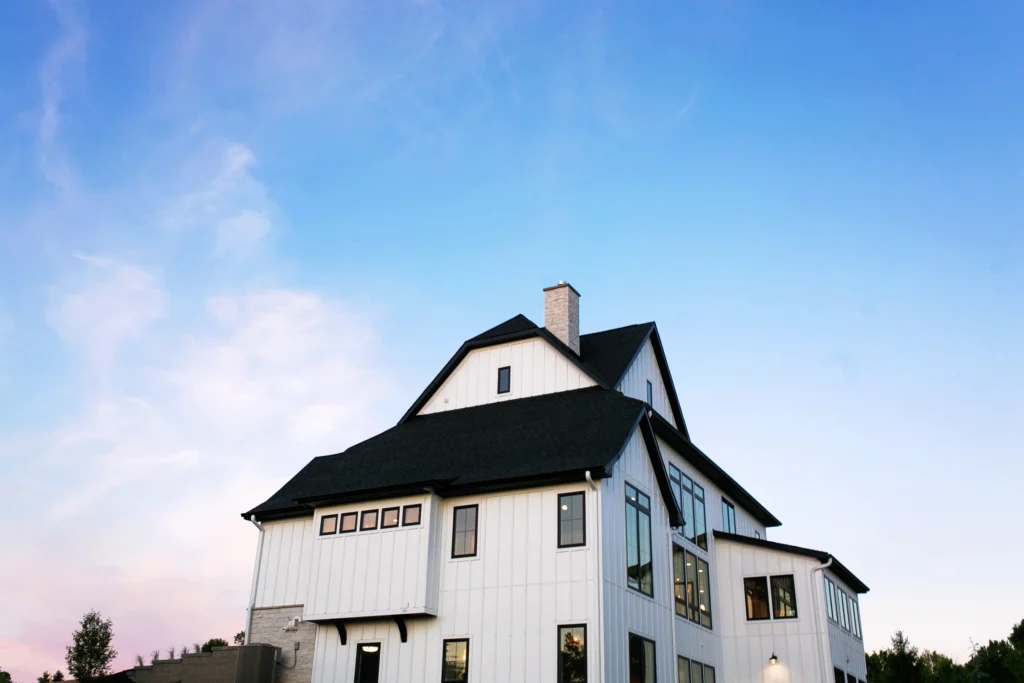
Getting the right perspective is another vital element in real estate photography.
“Achieving the best perspective involves careful composition”, Dionel explains, “and using tools like tilt-shift lenses to correct distortions on-site.” This helps ensure that vertical lines are straight and elements are properly aligned, which is critical in real estate photography. She recommends using a tripod or monopod for stability and adjusting the camera’s height to match the eye level of the intended viewer. “The grid feature is great for maintaining straight lines and avoiding perspective issues.”
If some perspective issues are still present, they are typically fixed during post-processing, Dionel explains, using tools like Imagen, Lightroom’s Transform panel, or Photoshop’s Perspective Warp feature. These tools help correct any distortions and ensure that vertical lines remain straight, contributing to a polished, professional final image. She also uses lens correction profiles to mitigate any lens-related distortions.
Tips for Beginners: Starting Strong in Real Estate Photography
For those just starting in real estate photography, Dionel advises focusing on the basics first: exposure, composition, and lighting.
“Find a mentor or assist a successful photographer to learn the ropes”, she suggests. Investing in key equipment, like a wide-angle lens, a sturdy tripod, and reliable external lighting, is crucial. And don’t forget to practice in various lighting conditions to understand how different setups affect your shots.
Dionel also recommends networking with real estate professionals and offering free shoots initially to build a portfolio and gain experience. This hands-on learning will provide invaluable insights and help establish credibility in the field.
If you’re looking to become a certified real estate photographer, Dionel suggests you start by researching certification programs like those offered by the Professional Photographers of America (PPA), which cover industry standards and best practices. Additionally, obtaining a drone certification, such as the FAA Part 107 license, is increasingly important as aerial photography and videography become more popular in real estate marketing. Gaining hands-on experience through internships or assisting established photographers is also beneficial. Certification and drone licensure not only enhance your credibility but also demonstrate your commitment to excellence in the field.
Retouching Techniques: Keeping It Natural Yet Attractive
“When retouching real estate photos, I focus on enhancing natural light and correcting any color imbalances“, Dionel notes. “The goal is to create a clean, polished image that highlights the property’s best features without making it look overly edited.”
She uses tools like Lightroom and Photoshop to make localized adjustments to contrast and saturation, while also removing any distracting elements.
She’s also a fan of streamlining post-production with real estate photography AI editing tools like Imagen.
“Imagen has completely revived my ability to keep up with a heavy workload of 5-6 sessions per week while still having time for my family”, she shares.
Leveraging AI Tools for Efficient Editing and Consistency
Dionel swears by AI editing tools to optimize her workflow and maintain consistency. These tools not only save time but also help ensure each image is pixel-perfect and ready for listing. They handle the heavy lifting of batch processing, allowing Dionel to focus on what she loves — capturing the perfect shot. “Imagen has been a real game-changer”, she says.
Dionel adds that AI editing tools are great for batch photo processing and maintaining consistency across large sets of images, although she personally still prefers to add final touches manually to ensure they meet her creative standards.
The Role of High-Quality Photos in Property Listing Success
High-quality photos are crucial in real estate listings, often serving as the first impression potential buyers get of a property. Dionel recalls photographing a property that had been on the market for months with little interest. After updating the listing with her photos, the property received multiple offers within two weeks and sold above the asking price. “This is a testament to the power of professional photography in real estate”, she concludes.
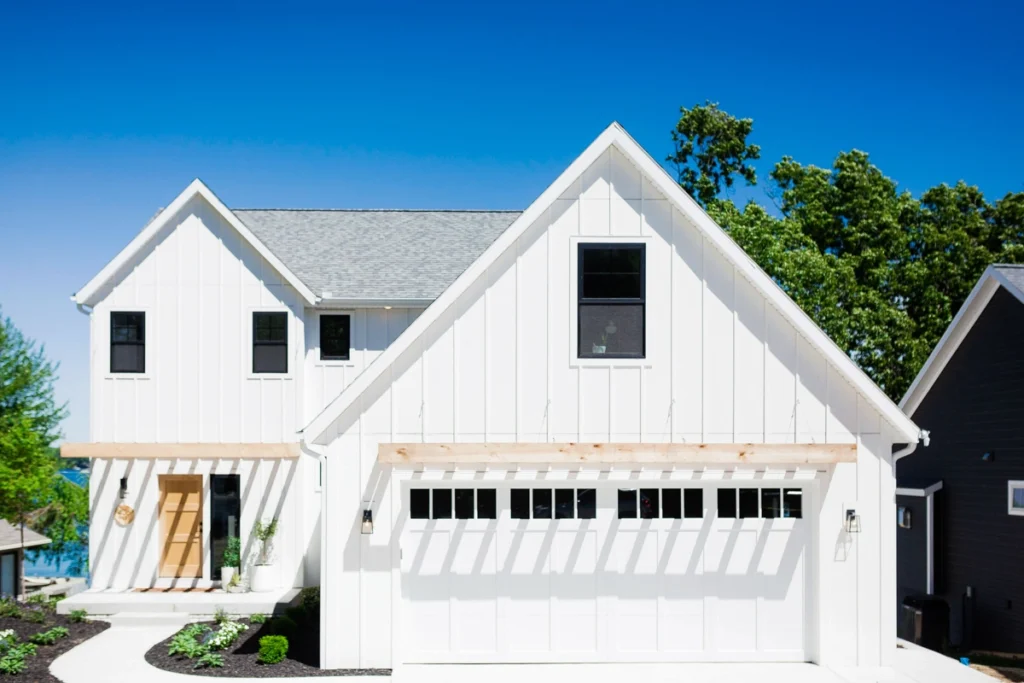
Marketing Your Real Estate Photography Services
To attract more clients, Dionel recommends building a strong online portfolio and using social media to showcase your photography expertise. Networking at industry events, offering referral discounts, and collaborating with real estate agents are also effective strategies. “Providing excellent customer service and delivering consistent, high-quality results will lead to word-of-mouth referrals”, she adds.
Conclusion: Elevating Your Real Estate Photography Game
Mastering real estate photography isn’t just about having the right equipment or understanding the technical aspects — it’s about balancing creativity with efficient workflows.
Whether you’re just starting or looking to refine your craft, mastering the art of real estate photography requires a balance of technical skill, creative flair, and efficient workflows. By adopting tools like AI editing software, maintaining consistency across shots, and focusing on both the big picture and the finer details, you can create compelling, high-quality images that stand out in a crowded market.
If you’re ready to take your real estate photography to the next level, consider incorporating some of these tips and techniques into your workflow. Remember, great photos don’t just sell properties — they tell a story. And that’s what truly connects with buyers.
______
With 17 years of experience in interior design photography, Dionel Lake, the owner and leading photographer of The MittenTog has mastered the art of capturing spaces with a keen eye for detail and a love for the unexpected. Her work is vibrant, colorful, and full of life, much like the people and places she photographs.
